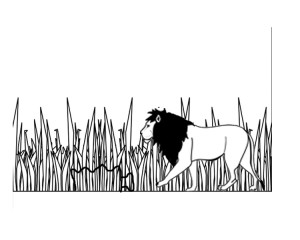
Cuttlefish Skin Patterns
Where’s The Octopus? – Cephalopod Skin and Vision
I saw this video about cephalopods and their amazing skill at mimicry and thought it would be an amazing tool to implement in other forms and ways.
The sensing mechanism that allows the octopus to blend in so well and quickly with its surroundings seems to be a combo of visual cues triggering response in malleable body tissue and hyper responsive skin pigment. They are colorblind, yet by sight they are color matching patterns in the environment. Further studies have been done of squid skin whose pigmant consists of 3 color chromatophors with reflectors underneath, which can expand up to 15 times the diameter, and are constantly twitching. Based on what the animal sees, these chromatophors seem to respond by modeling one of three of four basic pattern structures.
My first thought that such a sensing system might be useful for camouflage research tools and equipment when studying animals in the wild, so perhaps these things can get closer and be less obtrusive. A purely mechanical version of this sensing system might rely on tiny moving, expanding, contracting reflective disks. A small camera on the equipment might collect information on the contrasts in the environment and select from an array of specific patterns which one best matches the current environment and thus align the discs. Instead of being reflective, the discs could also be reservoirs that fill with more or less of one colored liquid depending on the surroundings. Furthering the mimicry ability, the surface that the discs or reservoirs are attached to might be made of muscle wire that expands or retracts to subtly alter the surface texture of the device based on infrared readings of textures in the surroundings.
Another option would be to do it electronically on the surface of the equipment. I just found that researchers into the next generation of e-readers at HP are working with this idea of octopus skin to create colored e-readers, looking at the octopus to find ways of making e-reader tablets that consume little energy, are not back lit, and provide full color. This tech could be combined with the camera vision information to create the different patterns and colors needed to camouflage into the surroundings.
The users for this sensor are researchers who want their presence in the habitat to be as unobtrusive as possible. The ones who will actually interface with the technology are the animals themselves, though when it is working best, their will be no conscious interfacing at all. It could be used of course to hide object from humans in urban and rural surroundings as well, either for aesthetic purposes or monitoring purposes.
Camouflage is something that has been played around with often over time, most notably by the army, what makes this different is the dynamic adaptability that cephalopods display and an attempt to bring that dynamic model to non-biological devices.
Thinking more fancifully I imagine a science fiction sort of future where cephalopod skin might be grafted on to humans for more artful purposes, such as a tattoo that can change daily to match your mood, surroundings or outfit. There is actually a joke product online that allows you to have a changeable tattoo through an e-ink implant into your arm, which would be the more cyber tech scifi approach – Changeable Tattoo . One might take it further – full body squid skin graft, for ultimate camouflage power –

Full body squid skin graft?
